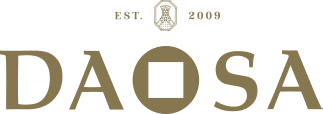SAUVIGNON blanc lived a peaceful existence in France until Robert Mondavi, the Napa Valley’s doyen of winemakers, planted it, fermented it in barrel and called it Fumé Blanc. Mondavi’s inspiration was White Bordeaux; a barrel-fermented blend of sauvignon blanc, semillon and muscadelle.
The recent improvement in the quality of White Bordeaux is not attributed to Mondavi but to some clever French winemakers and energetic Australian Flying Winemakers. Heavy extraction, lots of SO2 and indifferent oak no longer disfigure the wines. Moreover, better examples thrive with a decade or more in bottle.
Then there is the Loire Valley, with Sancerre and Pouilly Fumé at its eastern extremity marking the epicentre of varietal sauvignon blanc in France (and Europe). Sancerre produces diamond-cut sauvignon blanc, its low pH leading to almost painfully mineral acidity. Across the river in Pouilly Fumé the style is richer, and led the late Didier Dagueneau to pioneer exotically barrel-fermented sauvignon. Australia managed to straddle these schools, the Adelaide Hills with stainless steel, cool fermented, 100% sauvignon blanc at one extreme; Margaret River with barrel-fermented sauvignon blanc or sauvignon blanc-semillon blends at the other.
Then, with frightening speed and size, the tsunami of Marlborough sauvignon blanc swept the UK and Australian markets. Grown on laser flat ancient river beds, with unlimited snow-melt water, mechanisation slashing labour costs, and a benign climate perfectly suited to the variety producing high yields of a Pandora’s box of tropical fruits, it was irresistible. Low production costs, a favourable exchange rate (until recently), and some windfall tax breaks added to the appeal.
Australia’s practitioners have not been overwhelmed; they do not compete on price, but do so with marvellously constructed, totally individual wines.
2013 Terre à Terre Single Vineyard Wrattonbully Sauvignon Blanc
A perfect growing season resulted in concentrated flavours achieved at a lower than normal alcohol level; fermented in a mix of French barriques and demi-muids, and a complicated regime of lees maturation. Outstanding line, length and balance, the fruit expression piercing in intensity. 12% alc; screwcap. 96 points; drink to 2018;
Author: James Halliday
Source: The Weekend Australian Magazine
Review Date: Saturday, August 9, 2014

